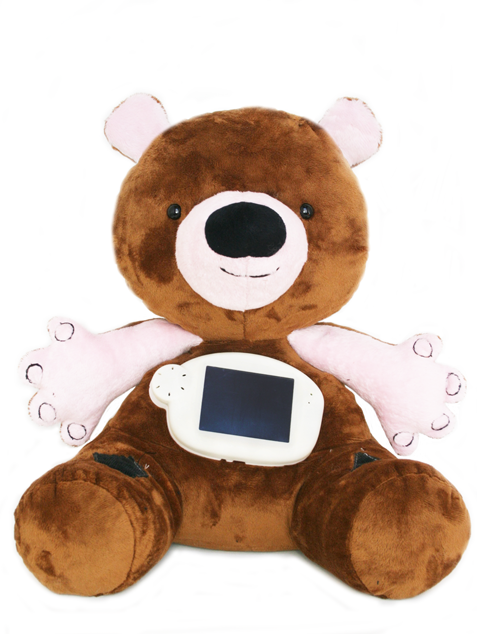Teddy Bear Could Help Kids Cope with Diabetes

NEW YORK — For young children with type I diabetes, days are filled with constant monitoring, finger pricking and insulin injections.
But one inventor is aiming to bring these children a bit of comfort during these activities, as well as to teach them the importance of staying healthy — he created a teddy called Jerry the Bear, who also has diabetes.
Aaron Horowitz, CEO of tech startup Sproutel, grew up with a condition called human growth hormone deficiency, which also required frequent injections to treat.
After visiting children with type I diabetes in hospitals, Horowitz said he realized that their feelings of loneliness mirrored his own.
Many of the children had stuffed animals, and projected their medical condition onto their inanimate friends, Horowitz said. In people with Type I diabetes, the pancreas cannot produce the hormone insulin. The children would prick their companions' fingers to test their blood sugar, and cut syringes out of paper to give them insulin injections. [Top 10 Stigmatized Health Disorders]
Horowitz set out to create an educational toy, and wound up with Jerry the Bear. This teddy bear's sensors connect to a central Android system, which runs a unique operating system. Jerry comes with a handful of interactive storybooks and games.
Children can feed Jerry, regulate his insulin with injections and prick his fingers to monitor his blood sugar. A large, colorful screen in the center of Jerry's chest provides not only a medical readout, but a space for children to play games.
Sign up for the Live Science daily newsletter now
Get the world’s most fascinating discoveries delivered straight to your inbox.
Horowitz made Jerry's condition into a game. Children must monitor Jerry's health very closely, because — as they will learn through storybook sequences and touchpad games — the bear is training for the Olympics, and won't let his disease stand in the way.
Jerry provides what Horowitz describes as "consequence-free learning." Skipping a meal or refusing an insulin injection can land a child in the hospital, facing a significant recovery time. If the same thing happens to Jerry, he also ends up in a virtual hospital. (However, he gets to return to his Olympics training after a stern warning.)
Horowitz shared his story of creating Jerry here on Sept. 18 at the meeting Make: Hardware Innovation Workshop.
For Horowitz, creating taught him about technology as well as design — Jerry has been through 10 variations. The bear's first iteration was absolutely terrifying, with its small, crossed eyes, ponderous mouth and matted fur. Children provided feedback and helped Jerry look and feel more approachable.
Jerry costs $250, with all the relevant accessories included. Horowitz said he wants to create other stuffed animals too, to help kids with different childhood illnesses.
Follow Marshall Honorof @marshallhonorof. Follow LiveScience @livescience, Facebook & Google+. Original article on LiveScience.









